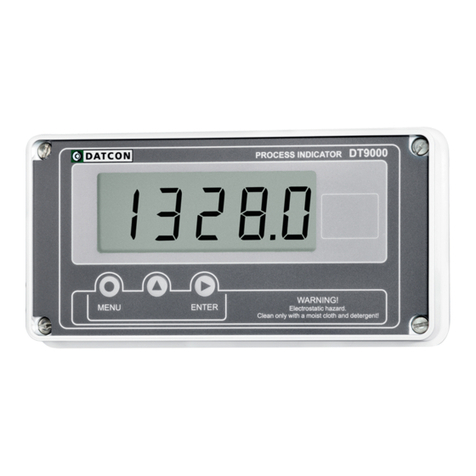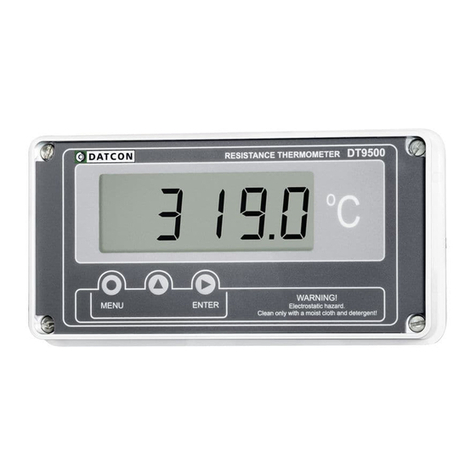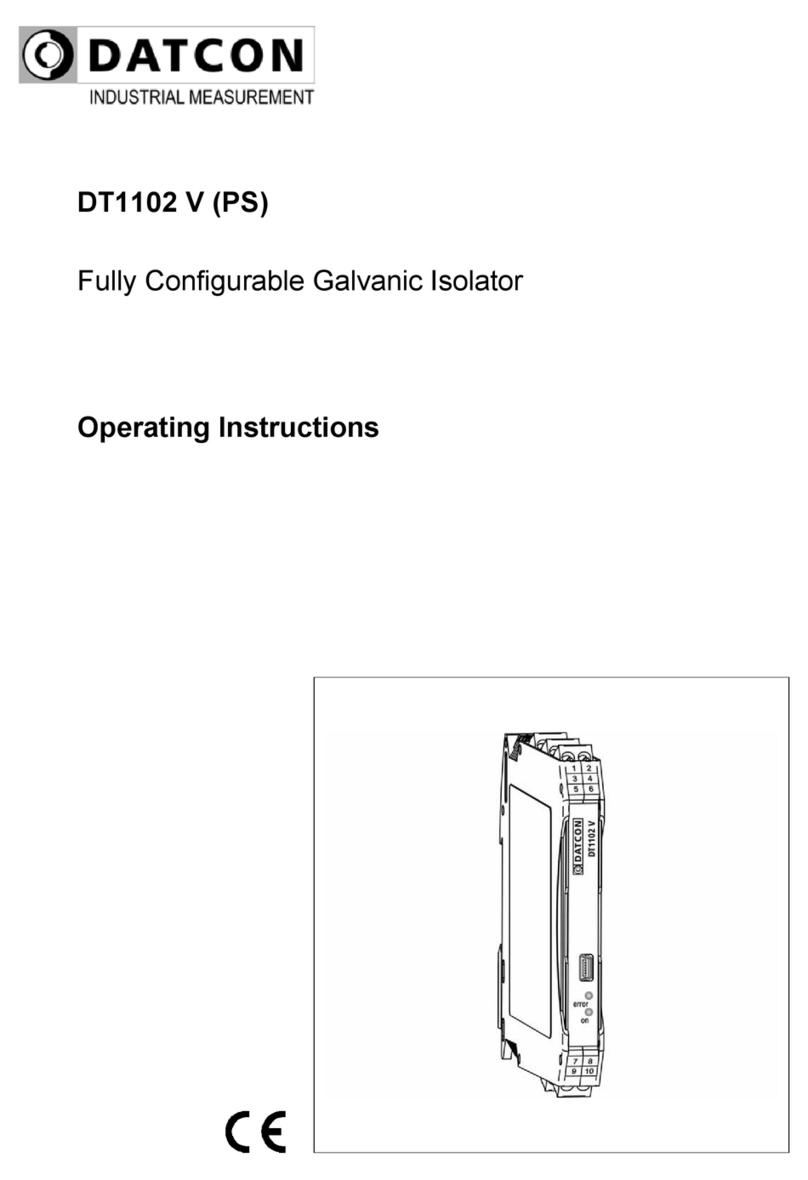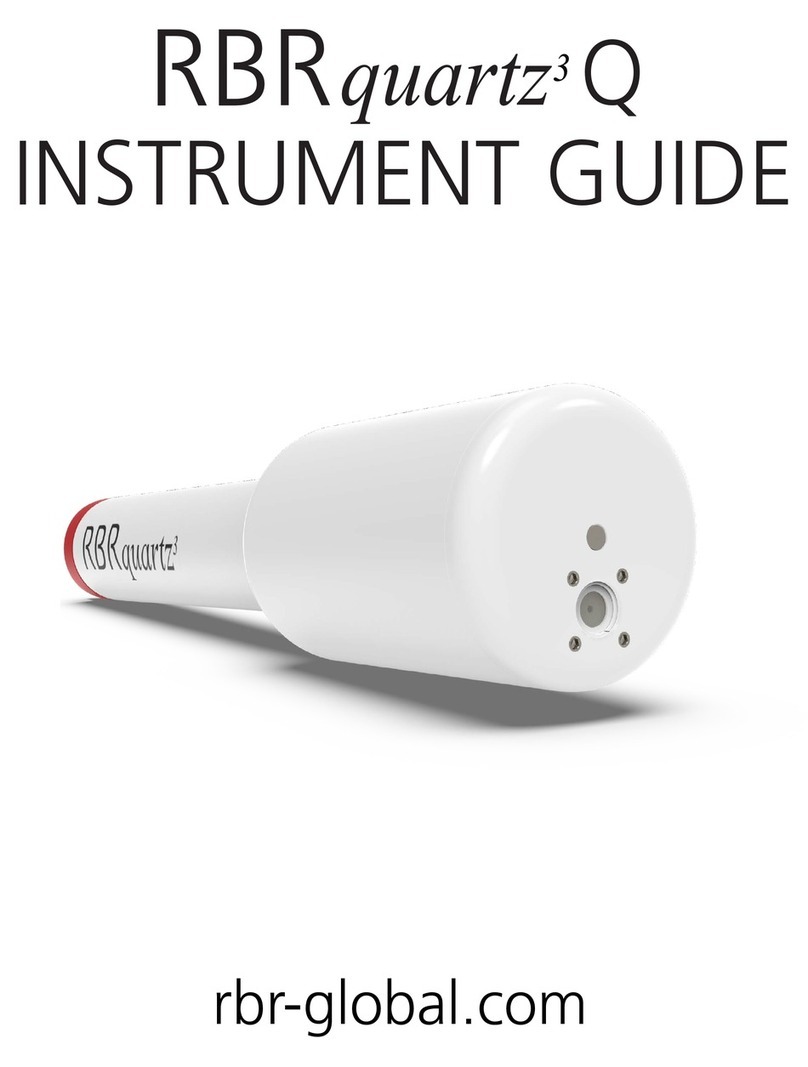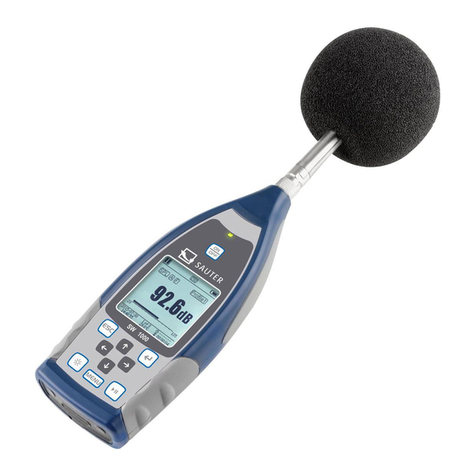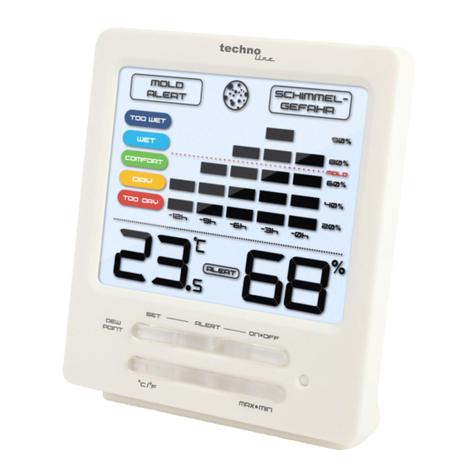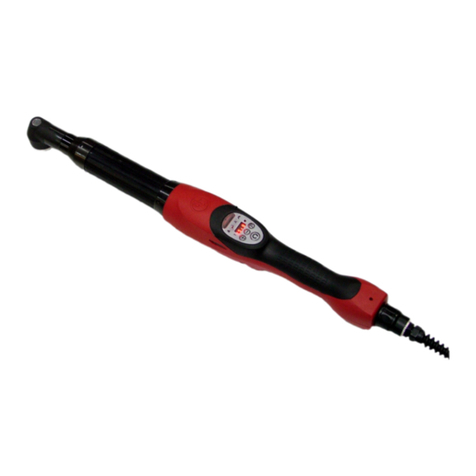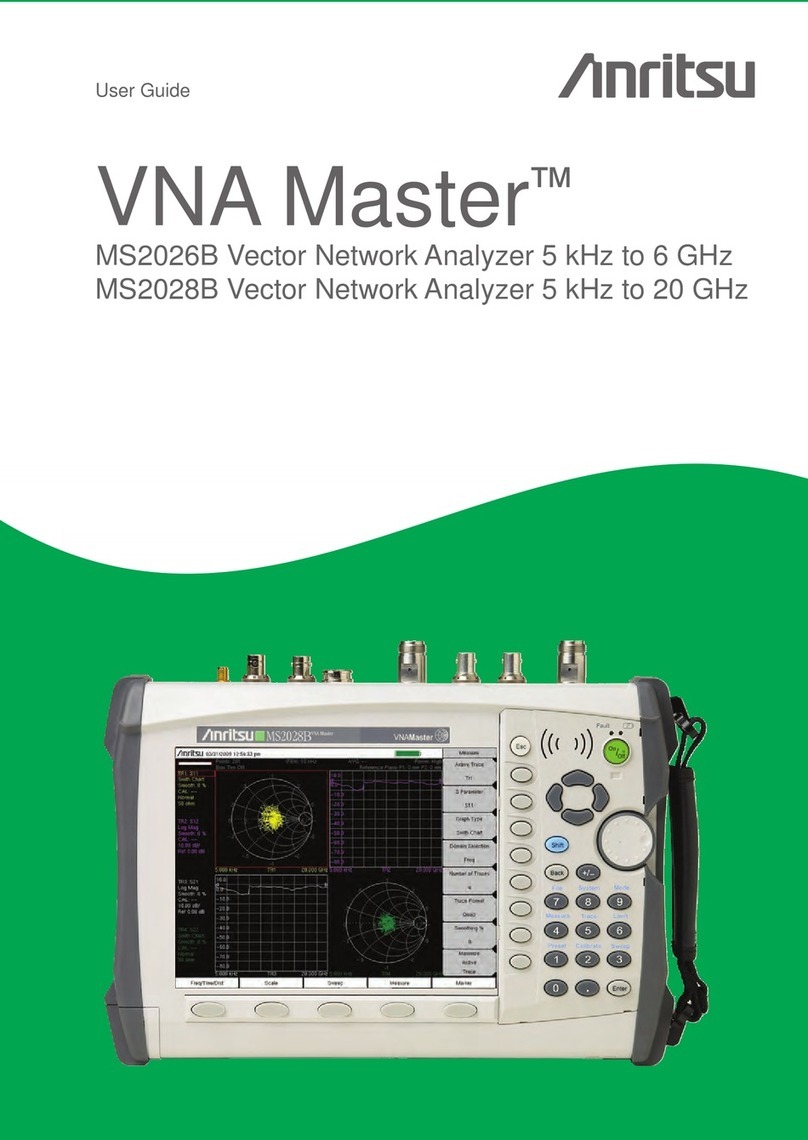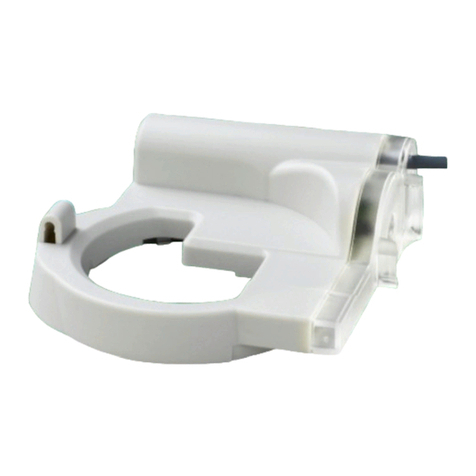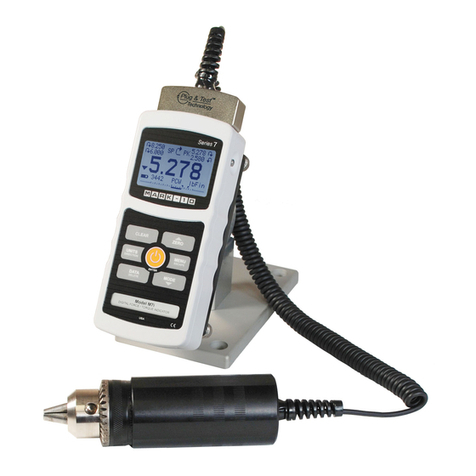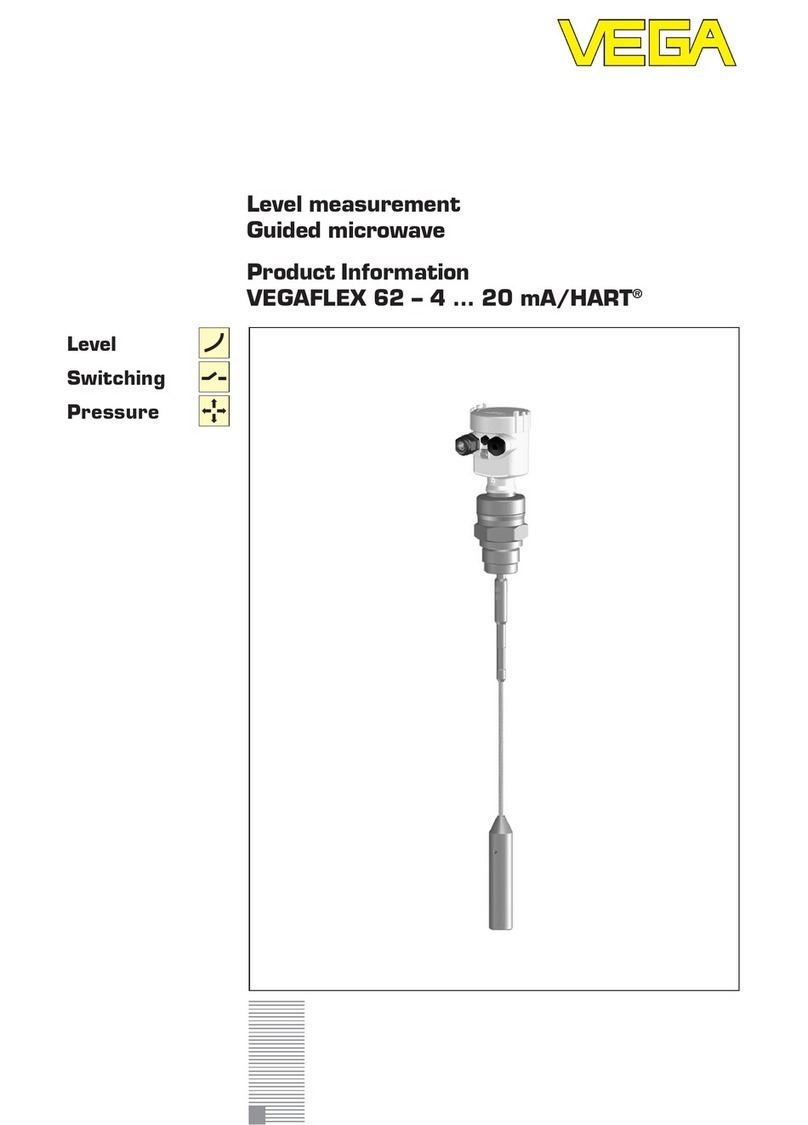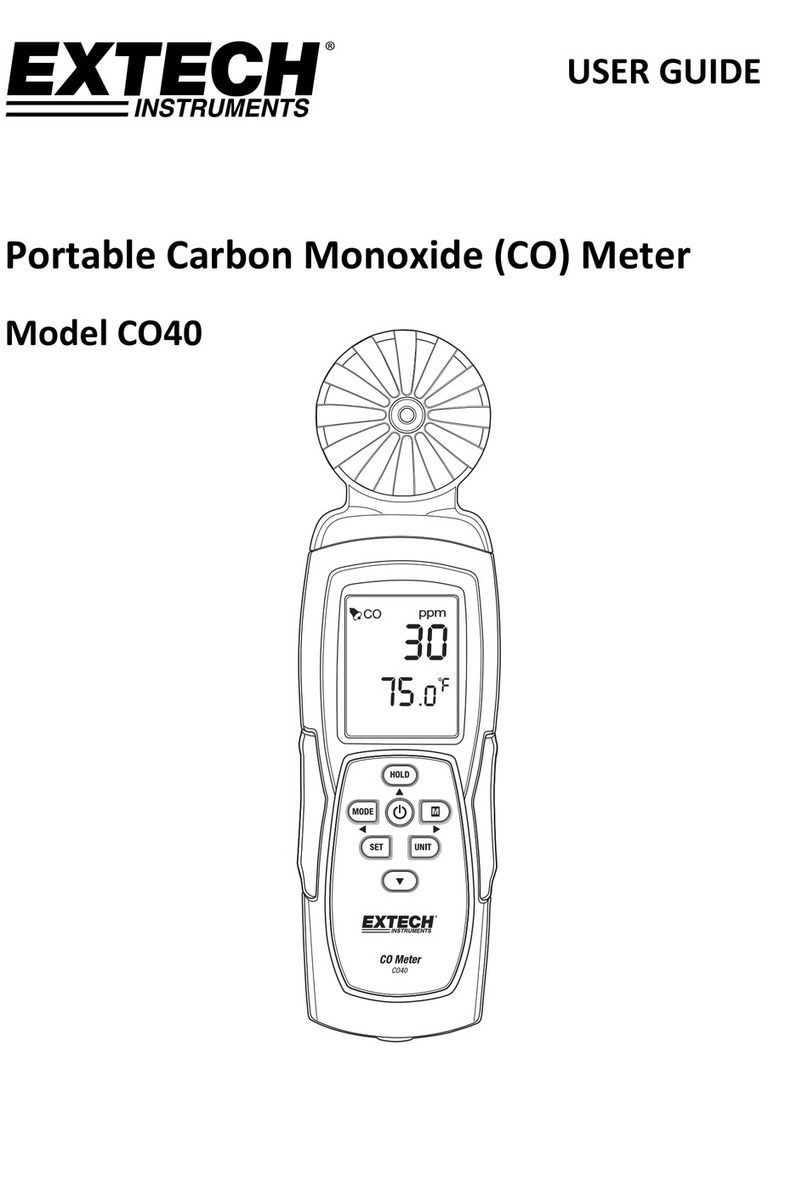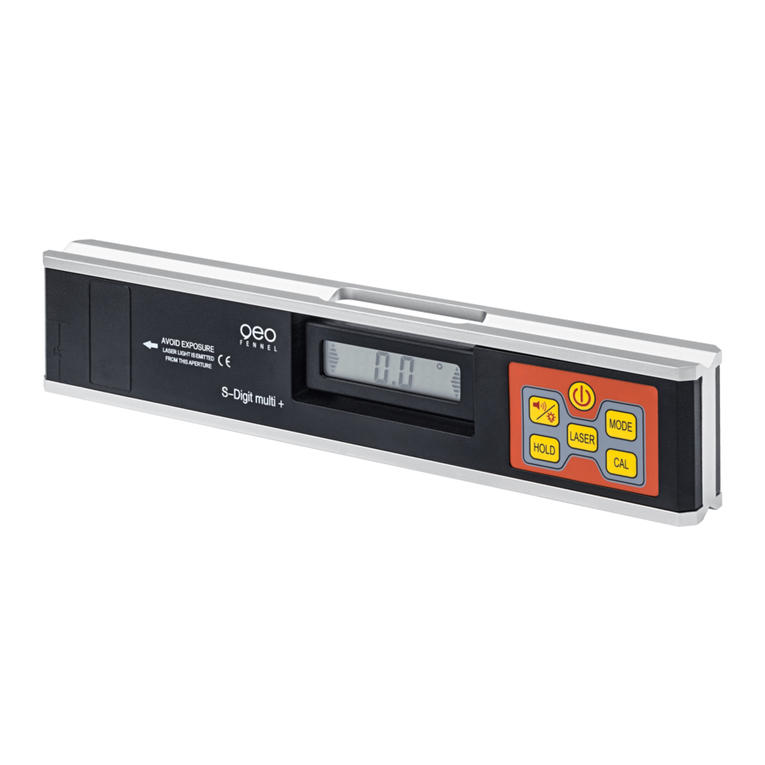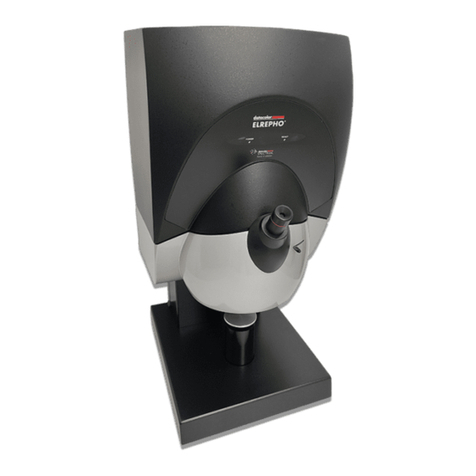Datcon DT920 User manual

DOC. N°:. DT920-62 eng
Manufacturer: DATCON Ipari Elektronikai Kft.
H-1148 Budapest, Fogarasi út 5. 27. ép.
Phone: +36-1-460-1000, Fax.: 460-1001
DT920
Intrinsically Safe Tachometer
User Manual

2

3
Contents
1. Function....................................................................................................................4
. .................................................................................................................................4
2. Operating principle....................................................................................................4
. .................................................................................................................................4
3. Connecting the device...............................................................................................5
. .................................................................................................................................5
4. Mounting of the device..............................................................................................6
. .................................................................................................................................6
5. Putting the device into operation ...............................................................................6
. .................................................................................................................................6
5.1. Error signals.....................................................................................................................7
5.2. Programming of the device..............................................................................................7
5.3. Limit-value-switching outputs ..........................................................................................8
5.4. Analogue output...............................................................................................................9
. .................................................................................................................................9
6. Maintenance, repair...................................................................................................9
. .................................................................................................................................9
7. Technical specifications ..........................................................................................10
. ...............................................................................................................................10
— Quality Certificate

4
1. Function
.
The apparatus DT920 is a pulse-input tachometer, which can be installed in explosive areas
classified as Zone 1.
2. Operating principle
.
Contact signal transmitters, or any inductive proximity sensors in accordance with the standard
DIN 19234 (NAMUR) can be connected to the input of the apparatus. The pulses, coming from
the signal transmitter, arrive at a repeater output after galvanic isolation, providing opportunity
for a processing independently from the device. The proportionality factor between the input
frequency and the displayed value is programmable. The apparatus has 4 galvanically isolated
limit-value outputs, which are also programmable. A special service provided by this apparatus
is a continuous inspection of the input line concerning the short circuit or the breaking of the
line. In addition, the apparatus has a 4-20 mA scaleable analogue output.
The apparatus works with a microprocessor, and it is programmable with the 4 pushbuttons on
the front cover. The values of the parameters are maintained even after the apparatus has been
switched off, as they are stored in an EEPROM.
The apparatus uses the following algorithm to create the displayed values from the incoming
pulses:
Rotation speed = ((f / P1) * P2) / P3 [1 / minute]
f = frequency coming from the signal transmitter [1 / minute]
P1 = number of teeth of the signal transmitter gear (programmable parameter)
P2 = number of teeth of the power transmission ratio multiplier gear (programmable parameter)
P3 = number of teeth of the power transmission ratio divider gear (programmable parameter)
The basic version is equipped with the pulse input and the display only.
The following additional functions are available for the tachometer DT920:
•Limit value output(s), maximum 4
•4–20 mA scaleable analogue output
The Manufacturer may modify the program of the apparatus in accordance with customer
needs, or in order to ensure technical improvement. Such modifications do not have any im-
pacts on the requirements of intrinsical safety.
Figure 1 presents the block diagram of the apparatus:
Figure 1. Block diagram
Display
Keyboard
CPU
NAMUR
Power
supply
Analogue
output
Limit
outputs
NAMUR
input
Us
4–20 mA
analogue
output
Digital
contact
outputs

5
3. Connecting the device
.
The DT920 tachometer can be operated by using an intrinsically safe power-supply unit.
The apparatus is built in an IP-65-protected plastic box; the cable outlets are secured by stuffing
boxes. The connecting of the device is presented by Figure 2.
Figure 2. Connecting of the device

6
4. Mounting of the device
.
The device is installable in places classified as Zone 1 or lower.
When the device is installed, the prescriptions on the installation of intrinsically safe devices
must be observed.
The apparatus is available in wall-mountable or in instrument panel installable versions. In the
case of wall-mountable design the cables used for the electrical connecting of the device can be
connected through the stuffing boxes on the bottom of the device. After the housing of he de-
vice is opened, four holes will become accessible on the back of the device near the corners.
These holes are used for fixing the device on the wall. After the apparatus has been fixed to the
wall, the connecting cables must be connected through the stuffing boxes to the terminal as-
sembly. After the device has been assembled again, it can be switched on. When the panel-
installable version is mounted, the relevant cables go through the stuffing boxes that are situat-
ed on the back wall of the apparatus. After the housing of the apparatus has been opened, the
housing is inserted into the cut-out of the instrument panel (when the cut-out is designed, the
outer dimensions presented by the following drawing must be taken into consideration). The
house is fixed by using the fastener fittings on the side walls. After the cables have been con-
nected, the front cover is put back to its place, and fixed. Now the device can be switched on.
Figure 3. Installation of the device
5. Putting the device into operation
.
After the housing has been mounted to its place, and the device has been connected and as-
sembled, the supply voltage of the apparatus can be switched on.
After the device has been switched on, it performs a self-test. If the self-test is successful, the
device sets itself to normal status (the value „0” is shown on the display). If the apparatus finds
an error during the self-test, then the code indicating the error is shown on the display (e.g.
„E1”). The explanation of the error codes is included in the following chapter.
In programming mode all the optional outputs could be used in principle, however only the phys-
ically installed outputs can be used in practice, therefore always check the data table of the
device before connecting it, if the given option has been installed (analogue output, limit-value
outputs)!

7
5.1. Error signals
Error signals during measurement:
Error code:
Meaning
E 1
Power-supply voltage error (Us < 15 V)
E 2
Short sensor (I > 6,5 mA)
E 3
Broken sensor (I < 0,5 mA)
E 4
Display overflow
E 5
Too high input frequency
E 6
Error in reading command code
E 7
Processor program running error (watchdog)
E 8
Processor clock-generator error
The error signal, when parameters are registered:
Three short whistling if the written value is out of the permissible range.
5.2. Programming of the device
1
Upon pressing the „SET” button once, the device enters to program
mode, which is shown by the light of the LED in the corner of the
„SET” button.
On the LCD, the name of the first parameter is shown: P1.
2
You can go to the required parameters other than P1 by using the "↑"
button.
3
When you press the „ENTER” button, the value of the parameter you
selected in Point 2 appears on the display.
4
The value of the parameter can be changed by using the "→" and the
"↑" buttons:
"→" selecting the digit you want to change (the selected digit blinks)
"↑" increasing the value of the selected (blinking) digit (after 9, 0 will
come)
5
By pressing „ENTER” you record the selected value: In this case the
device goes to Point 2, and writes the name of the following parameter
on the display.
6
By pressing „SET” the device will return to measurement mode any
time.
Attention! The tachometer will keep only those changes that are recorded by pressing the
„ENTER” button. If you changed one of the parameters, but you haven't recorded it yet with
„ENTER”, and you want to reset the original value, exit the program mode by pressing „SET”.

8
Programmable parameters:
Display
Parameter name
Minimum
Maximum
P1
Number of teeth of the signal transmitter gear (divider)
1
9999
P2
Number of teeth of the driven gear (multiplier)
1
9999
P3
Number of teeth of the driving gear (divider)
1
9999
P4
Place of the decimal point
0
4
P5
Analogue output scaling (0mA=0 1/minute, 20mA=P5
1/minute)
1
9999
L1 1
Limit 1 switching-on threshold
0
9999
L1 -
Limit 1 switching-off threshold
0
9999
L1 H
Limit 1 hysteresis
1
9999
L2 1
Limit 2 switching-on threshold
0
9999
L2 -
Limit 2 switching-off threshold
0
9999
L2 H
Limit 2 hysteresis
1
9999
L3 1
Limit 3 switching-on threshold
0
9999
L3 -
Limit 3 switching-off threshold
0
9999
L3 H
Limit 3 hysteresis
1
9999
L4 1
Limit 4 switching-on threshold
0
9999
L4 -
Limit 4 switching-off threshold
0
9999
L4 H
Limit 4 hysteresis
1
9999
5.3. Limit-value-switching outputs
The limit-value-switching outputs are available optionally. In program mode any limit-value out-
puts can be set, but we can use only the physically installed outputs, therefore, before connect-
ing the device, check always the data table of the apparatus to see whether the given option
has been installed.
The operation diagram of limit-value switches in the case of (L1 1) < (L1 -)
(L1 1) = 5
(L1 -) = 12
on (L1 H) = 2
1/minute
off 5 7 10 12
The operation diagram of limit-value switches in the case of (L1 1) (L1 -)
(L1 1) = 12
(L1 -) = 5
on (L1 H) = 2
1/ minute
off 5 7 10 12
See the chapter „Programming of the device” on the setting mode of the individual parameters.

9
5.4. Analogue output
The analogue output is an option. In program mode the analogue output can be selected, but
only physically installed outputs can be used, therefore always check the data table of the de-
vice before connecting it, to see whether the given option has been actually installed.
.
6. Maintenance, repair
.
The device does not require maintenance, and it does not contain such parts that are repairable
or replaceable by users.
Electrostatic hazard.
Clean only with a moist cloth and detergent
1/ minute
Ianalogue
0
20mA
4 mA
2000
(P5) = 2000

10
7. Technical specifications
.
Intrinsical safety class: II 2 G EEx ia IIC T4 -20 °C ≤Ta ≤+60 °C
Power-supply voltage input (Us[23]; 0V[22])
Supply voltage: 15–22,4 V
Current consumption: ≤70 mA
Connection to intrinsically safe circuits:
Ui ≤22,4 V, Ii ≤91 mA, Pi ≤2,1 W, Ci ≈0 F, Li ≤726 µH
Recommended power supply unit: Datcon DT2500 18 070 (Only EEx ib IIC)
NAMUR input DIN19234(NAMUR+[20]; NAMUR-[19])
Working resistance: 1 kΩ
Low level: 0,5–1,2 mA
High level: 2,1–6,5 mA
Breaking signal: 0,5 mA under
Short-circuit signal: 6,5 mA above
Frequency range: 0.3 Hz – 5 kHz
Connection to intrinsically safe circuits:
Uo ≤8,61 V, Io ≤8,72 mA, Po ≤18,75 mW, Co ≤5µF, Lo ≤100mH
Recommended sensors: TURCK Ni-G12-Y1,
Analogue output (AOUT+[18]; AOUT-[17])
Loading resistance: 0–120 Ω
Accuracy: 0,1 %
Connection to intrinsically safe circuits:
Uo ≤8,61 V, Io ≤49,7 mA, Po ≤107 mW, Co ≤5µF, Lo ≤10 mH
Recommended isolating device: Datcon DT1300 device family
Digital contact output (DOUTx+[6,8,10,12]; DOUTx-[5,7,9,11])
Galvanically isolated switching transistor.
Connection to intrinsically safe circuits:
Ui ≤30 V, Ii ≤35 mA, Pi ≤200 mW, Ci ≈0 F, Li ≈0 H
Uo ≤5 V, Io ≤1,35 mA, Po ≤1,6 mW
Recommended isolating device:
Datcon DT136x, DT137x, DT138x device family
The device can be installed to Zone 1, or to areas of lower class.
Display: 4 digit LCD; character height 25.4 mm
Maximum displayed value: 9999 rotation/minute
Operating temperature: -20–+60 °C
Storing temperature: -20–+70 °C
Mechanical design: Plastic box with screw-type fastening and with stuffing boxes
Mechanical dimensions: Panel instrument:
167 x 87 x 95 mm (width x height x depth)
Wall mounted instrument:
167 x 87 x 71 mm (width x height x depth)
Applied standards: MSZ EN 50014:2001 (Ex)
MSZ EN 50020:2003 (Ex)
MSZ EN 61326:2000 (EMC)
DIN19234 (NAMUR)
BKI licence number: 04 ATEX 132 X
Protection: In accordance with IP 65, MSZ EN 60529
Table of contents
Other Datcon Measuring Instrument manuals
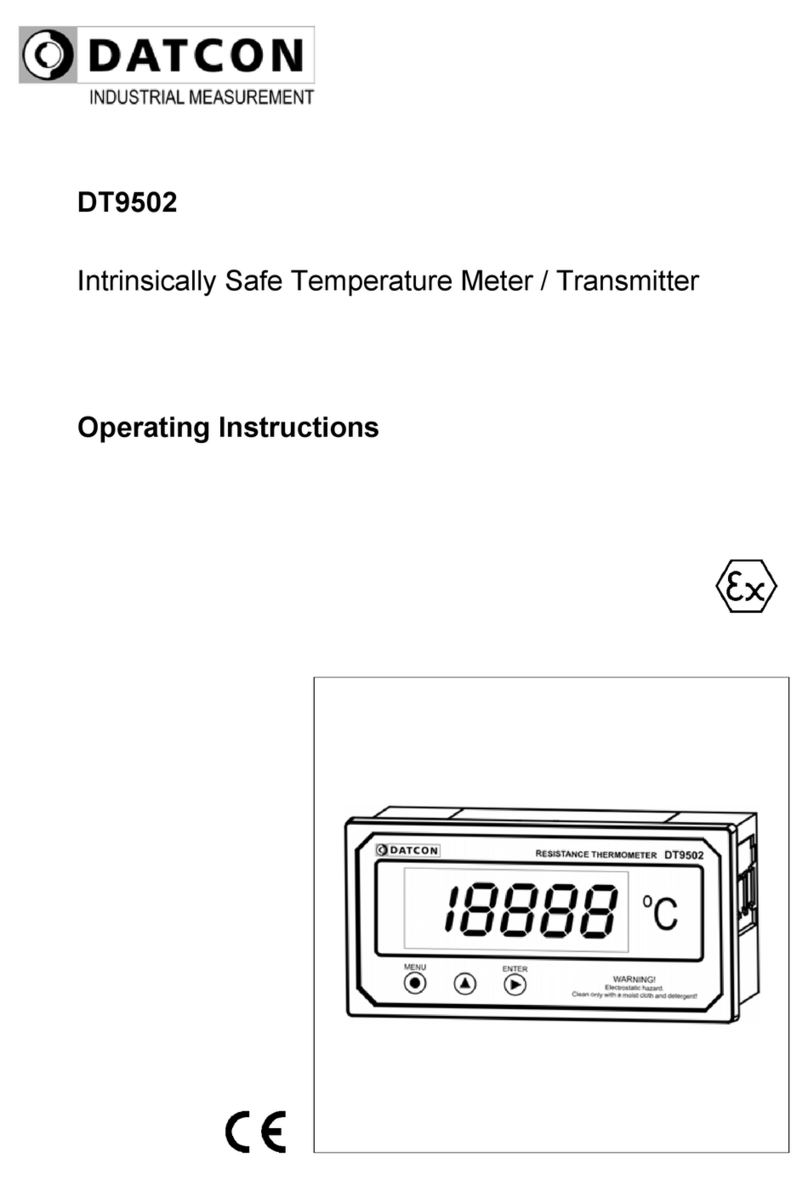
Datcon
Datcon DT9502 User manual
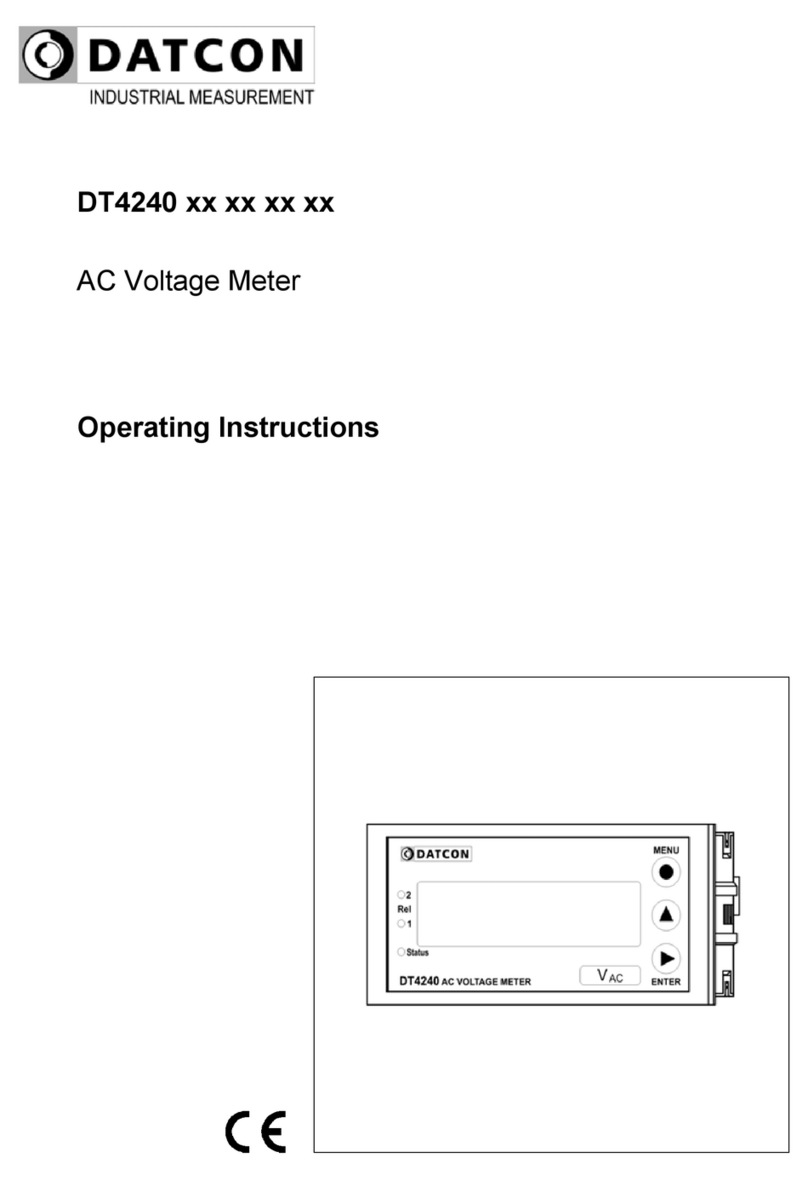
Datcon
Datcon DT4240 Series User manual

Datcon
Datcon DT4220 E Series User manual
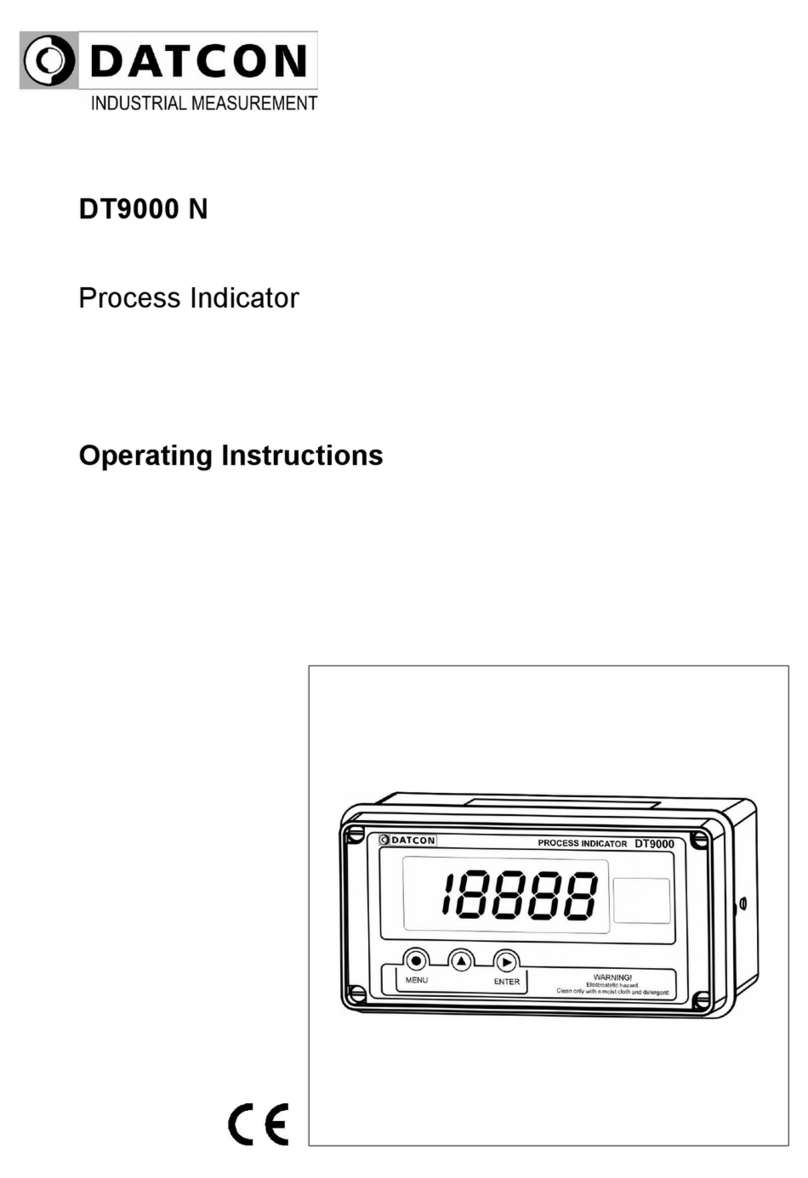
Datcon
Datcon DT9000 N User manual
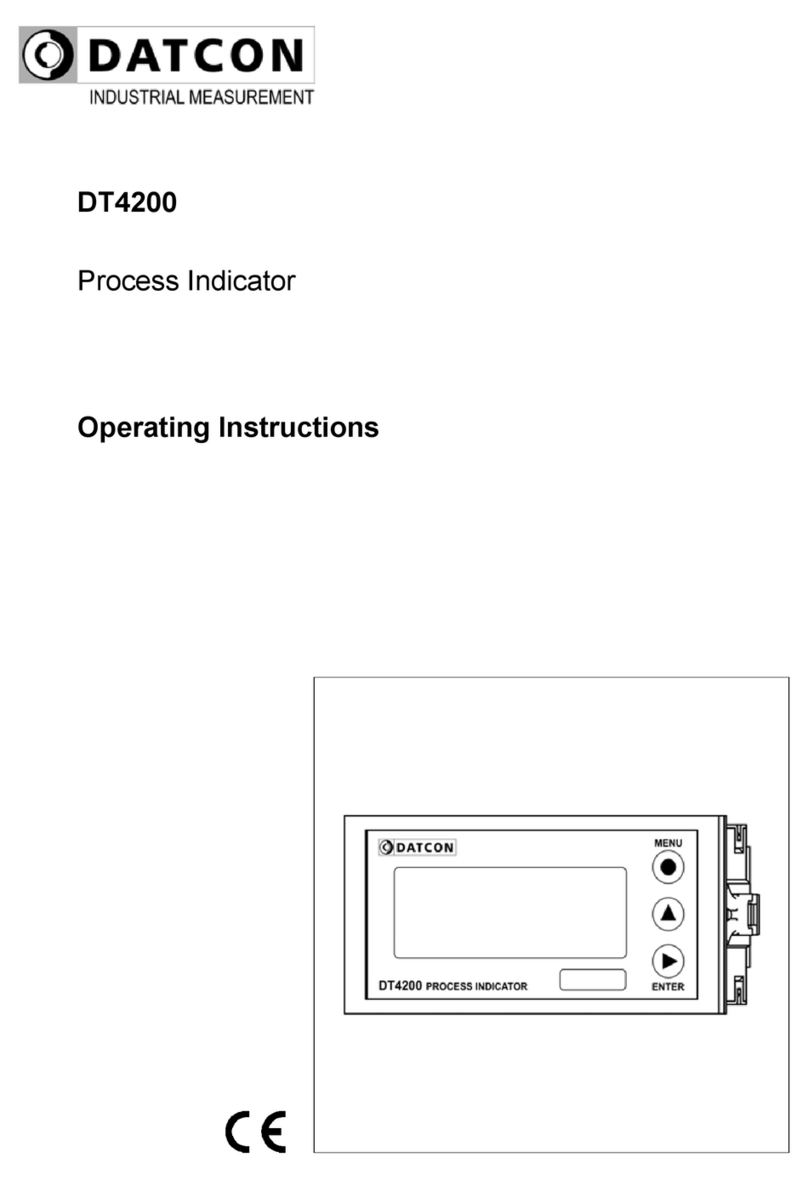
Datcon
Datcon DT4200 User manual

Datcon
Datcon DT7000 User manual
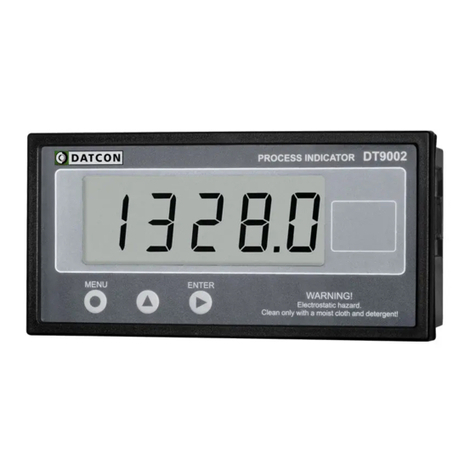
Datcon
Datcon DT9002 User manual
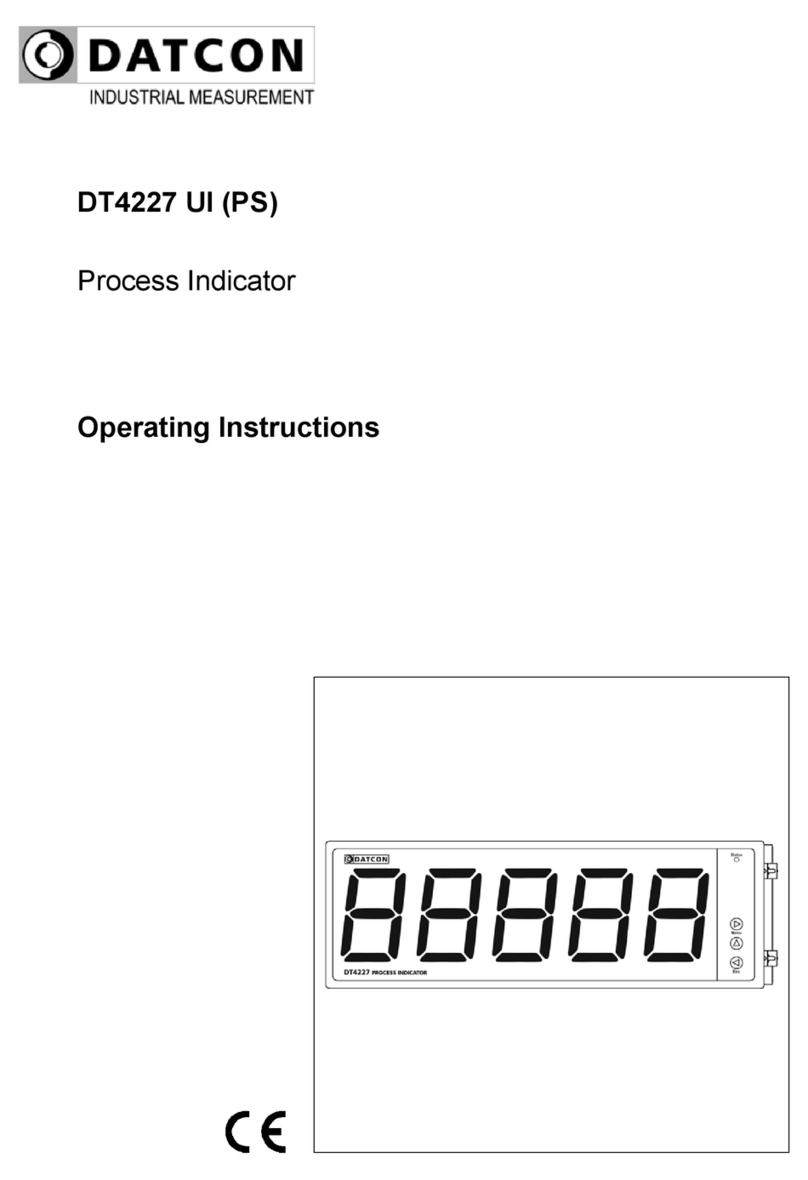
Datcon
Datcon DT4227 UI User manual
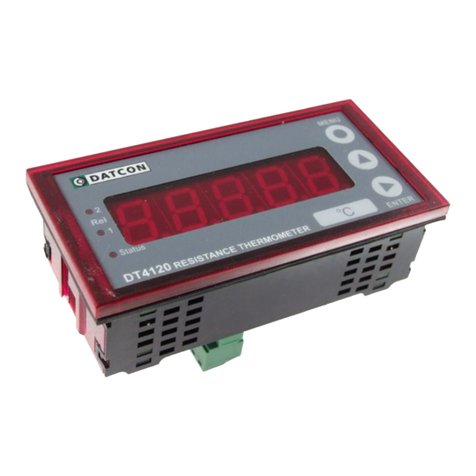
Datcon
Datcon DT4120 Series User manual

Datcon
Datcon DT4260 Series User manual
